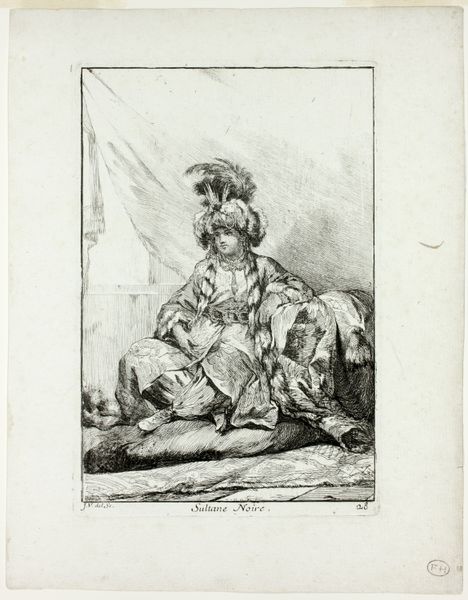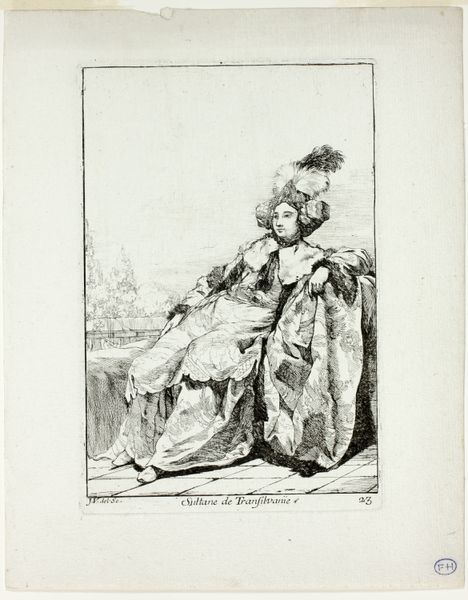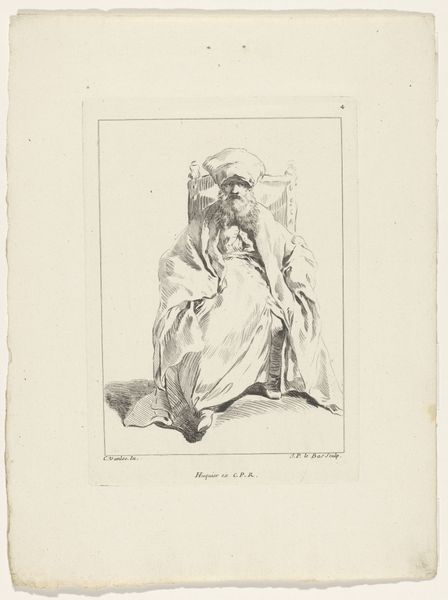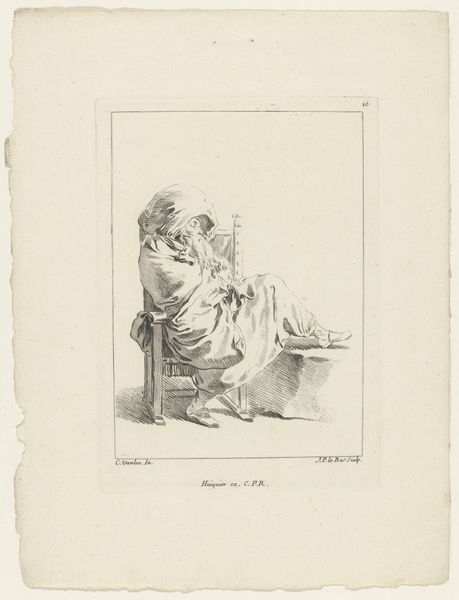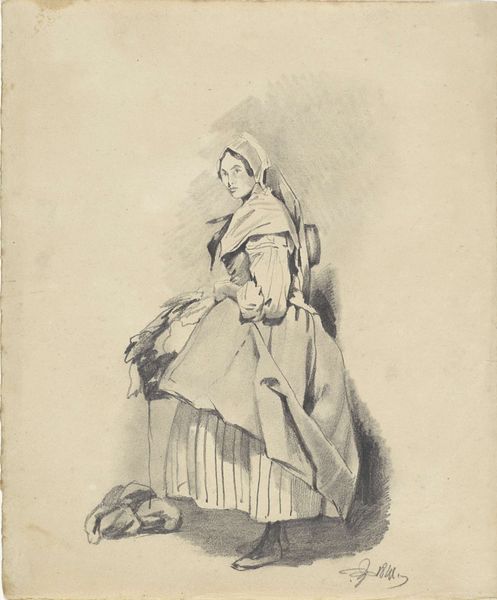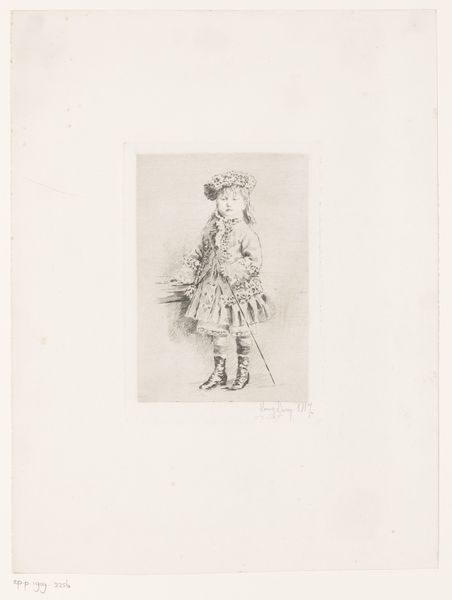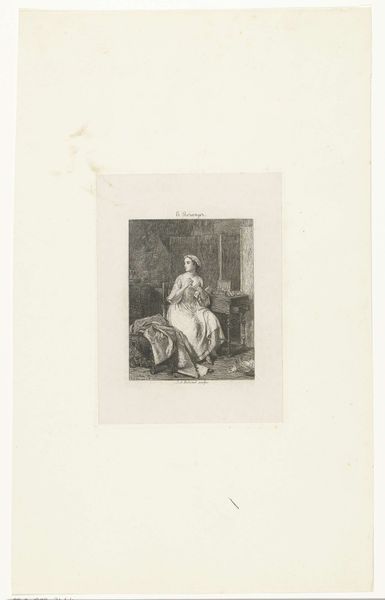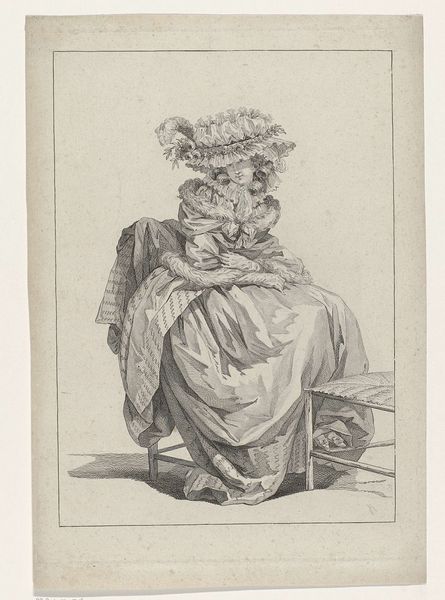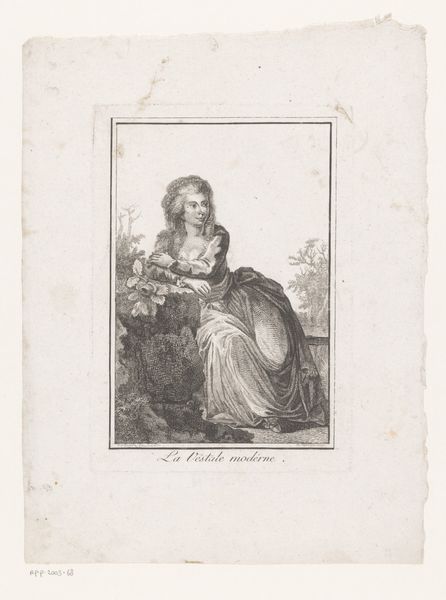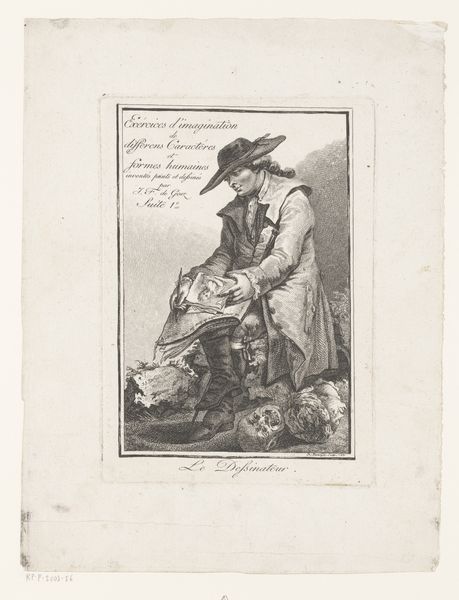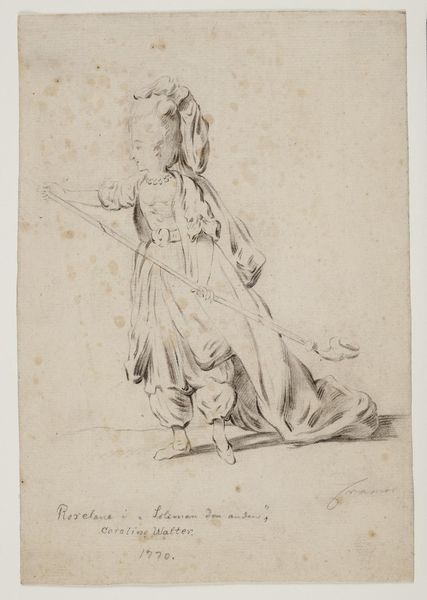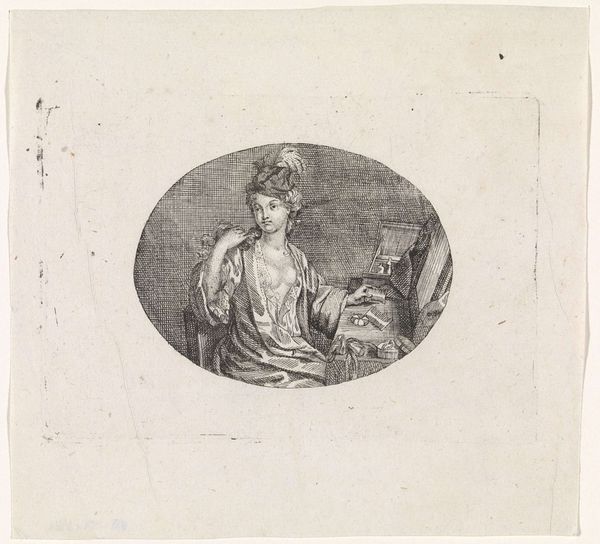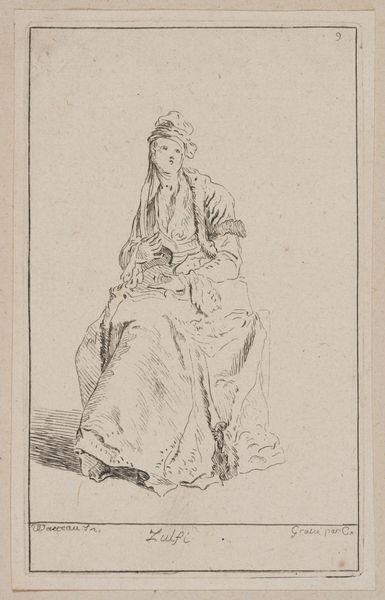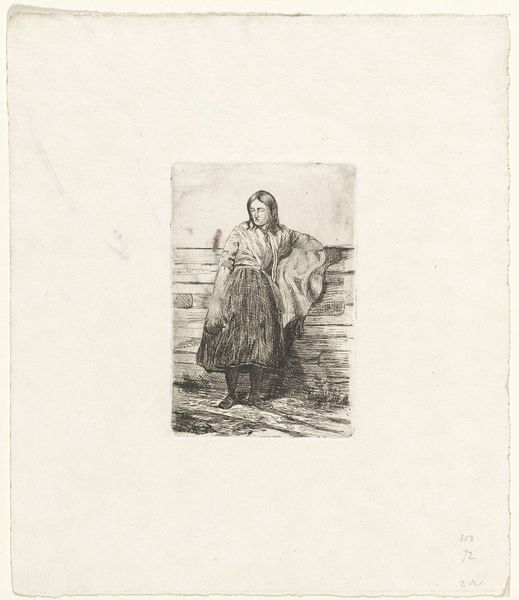
#
light pencil work
#
quirky sketch
#
pen sketch
#
pencil sketch
#
personal sketchbook
#
ink drawing experimentation
#
pen-ink sketch
#
sketchbook drawing
#
watercolour illustration
#
sketchbook art
Dimensions: height 95 mm, width 86 mm
Copyright: Rijks Museum: Open Domain
Curator: This pen and ink sketch is entitled “Zittende oude vrouw,” or “Seated Old Woman,” and it's by J. Moxser, dating from 1791. What are your initial impressions? Editor: Stark and affecting, despite its unassuming presentation. The sharp lines emphasize the subject's stooped posture and heavily lined face; it seems the artist intends to focus on age and experience. Curator: Absolutely. The quick, light pencil work, focusing as it does on texture and contrast, emphasizes the social realities for women, particularly older women, at the close of the eighteenth century. One can read into it the hard life they might have been subjected to, don’t you agree? Editor: While context informs understanding, consider how the composition invites interpretation. The hatching and cross-hatching creates depth but also abstracts certain forms. The central figure occupies most of the pictorial space, while other forms and figures remain distant, almost ghostly, enhancing the feeling of isolation. The visual rhythm draws the eye towards details: the sitter’s clothing, and her downturned face and heavy eyelids. Curator: But isn't that also representative of women in this era? Limited agency and near total reliance on patriarchal structures for economic survival. What might read as pictorial can easily transition to understanding of social realities. Editor: Perhaps, but consider this less as a representation of literal reality, and more an exploration into how human figures might occupy liminal spaces. Look at how the figure becomes obscured by heavy clothing: shadow playing on fabric rather than human flesh. I find in it not social realism but visual abstraction, a tension between the defined lines and formlessness. Curator: But surely artistic production never happens in a vacuum. Social messaging exists everywhere. This image becomes a cultural product the moment it is transferred into a reproducible format like this sketch. I believe the goal of the artist here might be to subtly indict that power structure. Editor: And while that's a possible interpretation, to restrict readings to strict social messaging feels... reductive, denying the artist the possibility of pure visual expression, to focus on composition and shape more than political statements. Curator: I appreciate your perspective. It prompts one to view the art in ways that open up discussion and encourage re-examination. Editor: Indeed. Approaching art from different angles is enriching; it shows just how much even a simple sketch can offer multiple avenues of discussion.
Comments
No comments
Be the first to comment and join the conversation on the ultimate creative platform.
